Flying Squirrels
Flying Squirrels
What Exactly Are Flying Squirrels?
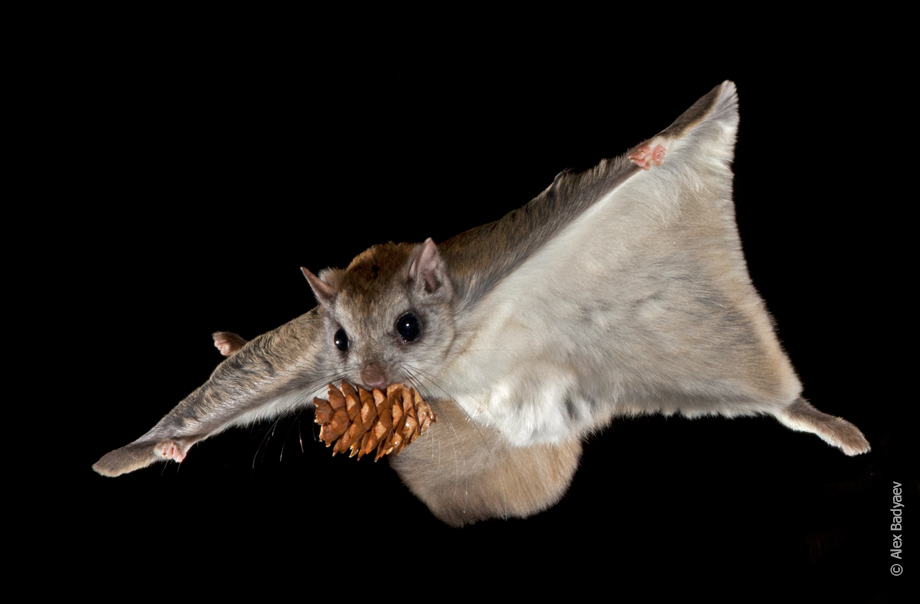
A flying squirrel. Photo: Alex Badyaev/www.tenbestphotos.com
Flying squirrels are one of the coolest looking animals on the planet. But they are completely misunderstood. Why is that? Well, let’s find out.

Rocky & Bullwinkle. A cartoon from the 60’s.
Rocky, The Flying Squirrel
Never thinking much about flying squirrels, we were thrilled to learn they live all around us in North Carolina.
Our first exposure to them? Watching Rocky & Bulwinkle as kids a million years ago. If you are too young to remember, it is a great cartoon about Rocky, a flying squirrel & his pal, Bulwinkle, the moose. You can still see some of the old shows on YouTube.
So back to the real animal. If you see something swooping overhead at night, it might not be a bat, but a flying squirrel. But are they actually flying? Nope, they are gliding from tree to tree, using a patagium. Hmm, that is a new word for us.
And by the way, if you’d like to learn more about bats and why they don’t fly into your hair, visit our “Bats” post.
What Is A Patagium?

All flying squirrels have a membrane made of fur that stretches from the wrist to the ankle and acts as a parachute when it leaps from a tree. Using the patagium and their tail, they are able to steer while gliding with flights recorded up to 300 feet.
Wow, that’s a long way! They can also rotate 180 degrees.
So what other animals have a patagium. Turns out, lots. Bats, flying lizards and even flying frogs all have patagia (that’s patagium in the plural, which we had to look up).
Watch them fly (ok, glide) in this fascinating video narrated by David Attenborough. Just amazing.
What Do Flying Squirrels Eat? Truffles!
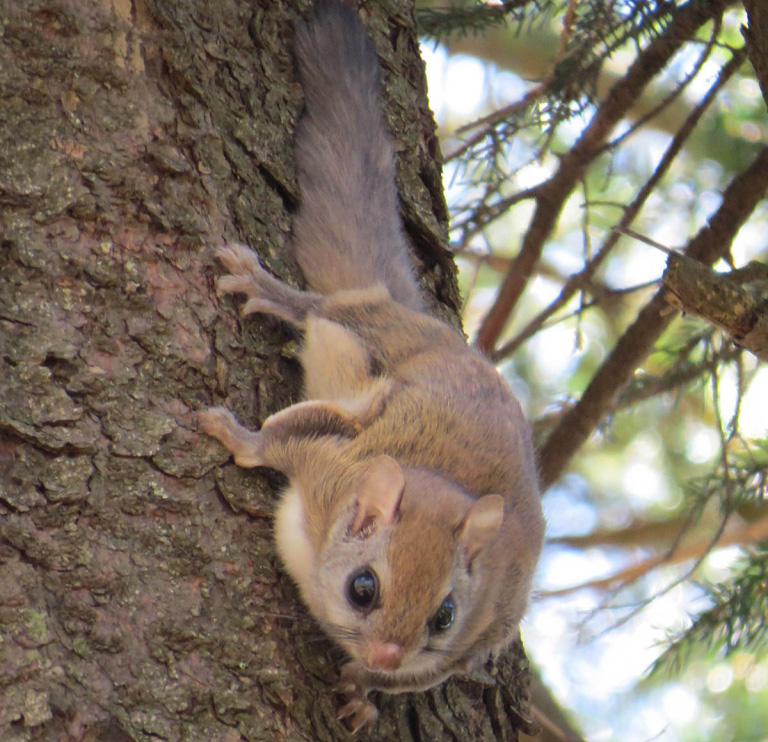
And come to find out, these cute mammals have been around for 18-20 million years. But we rarely see them since they are nocturnal, which is one reason their eyes are so big. They need to be able to see in the dark while gliding and foraging.
So, what do these guys eat? Well, they love truffles and other fungi. They also eat mushrooms, bird eggs, insects and flowers, making them omnivorous (meaning they eat plants & animals).
Plus, they eat lots of nuts, especially during breeding season when the mothers need additional nutrition. I think they should get a prize for storing up to 15,000 nuts in a season. Wow, and I wonder how they remember where they all are located?
Are They Endangered?
Out of 45 species of flying squirrel around the world, we have 3 in North America. The northern, the southern & the Humboldt’s (located in the Northwest US). Here in North Carolina, we have the southern flying squirrel except…
High in the mountains of Western North Carolina, you will find the Carolina northern flying squirrel, a subspecies of the northern flying squirrel. There are only 9 known populations in existence and they all live above an elevation of 4,500 feet. Not only is it endangered but very elusive.
So we were incredibly lucky to actually see one on a weekend trip to Western North Carolina. A once in a lifetime event. It just happened to be scurrying up a tree when we came across it on a hike.
But just how did our amazing discovery of this incredibly secretive animal come about? A couple of mysterious tall poles on either side of a road called The Cherohala Skyway high up in the mountains led to our encounter.
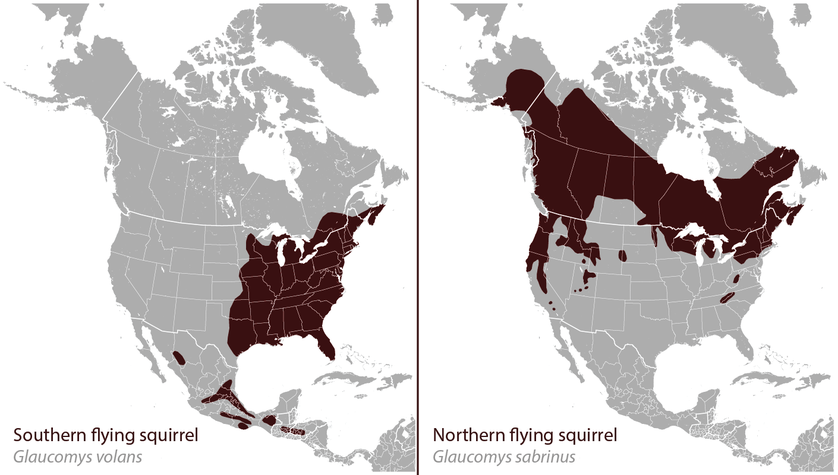
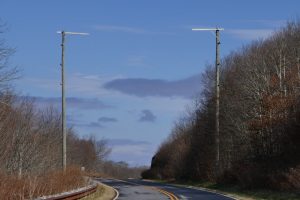
The Mysterious Poles!
What in the world is the purpose of these poles we wondered? There were 3 sets of 2 each spaced along the highway. Something having to do with snow? But what were the round, PVC tubes attached at intervals going up the poles?
Quite the mystery. But we are going to solve it!
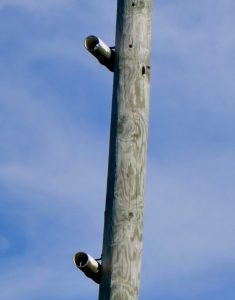
So we asked our innkeeper, Robert Rankin, at the Snowbird Mountain Lodge about the poles. He told us the story of the Cherohala Highway being built, a $100 million dollar project. Unfortunately, the road was so wide, the Carolina northern flying squirrels could not glide across it.
Something had to be done! So, a whole bunch of groups got together to come up with a solution including The North Carolina Wildlife Resources Commission with the aid of North Carolina Department of Transportation, Duke Energy, U.S. Fish and Wildlife Service and the U.S. Forest Service. They constructed poles to act as landing and launching spots for the squirrels to use in crossing the highway. And they seem to be working!
The PVC tubes are for hiding from predators while the flying squirrels are up on the poles. How cool is that!
And to learn more about why wildlife cooriders are so critical to wildlife survival, check out our blog, “Why Wildlife Corridors are Critical to Our Wildlife’s Survival“
Other Cool Flying Squirrel Facts
- Flying squirrels have many predators including owls, raccoons, and snakes.
- Nesting high in trees, their young are born without any fur. The babies stay with their mom for a couple of months nursing & then leave to live on their own after about four months.
- It is not unusual to have a number of flying squirrels all pile into one nest, especially in the colder months. Now that would be a sight.
- But the coolest fact? They glow in the dark. All North American flying squirrels have a pink glow at night. So if you see a pink light go gliding by you in the middle of the night, it just might be a flying squirrel.
- When gliding, they can change direction by 180 degrees. Incredible!
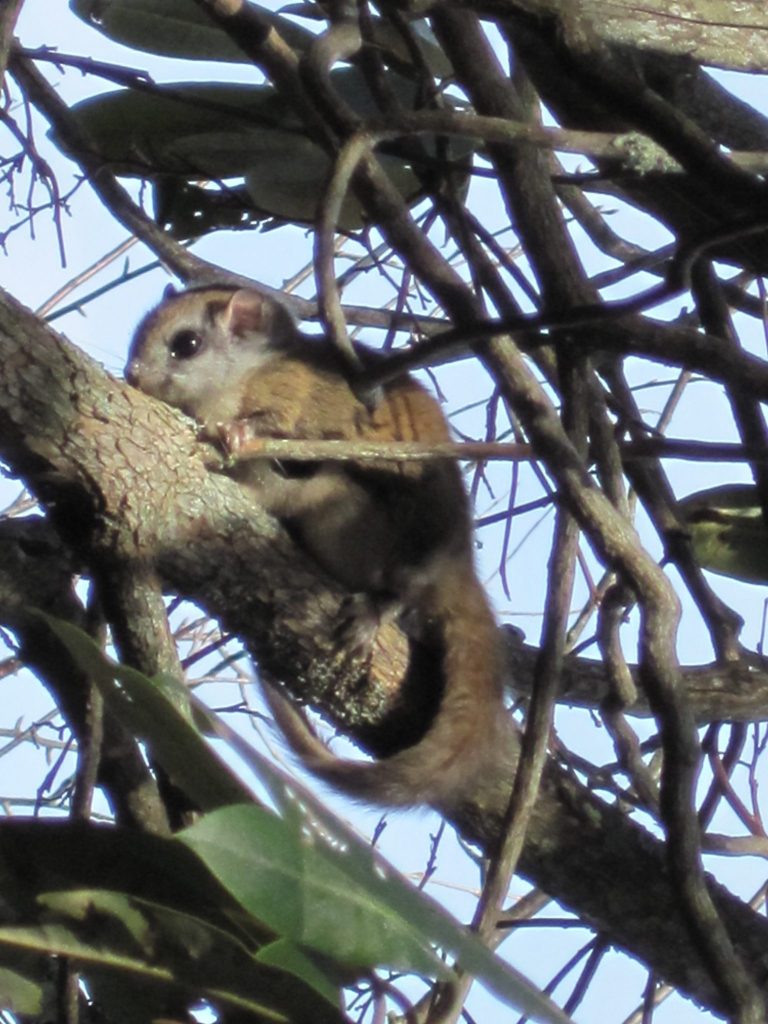
Become A Flying Squirrel Advocate
How can you help these cute squirrels, especially the endangered Carolina northern flying squirrel?
Learn more about them and spread the word on social media.
Support an initiative by the Southern Highlands Reserve. The Carolina northern flying squirrel feeds on fungus living at the base of conifers at high elevations. Unfortunately, many of the trees (hemlocks, Fraser firs & red spruce trees) have been decimated from non-native pests and climate change.
Several groups have partnered to plant new spruce trees in the squirrel’s habitat with over 4,000 planted to date. And Southern Highlands Reserve is the only plant nursery growing the seedlings needed.
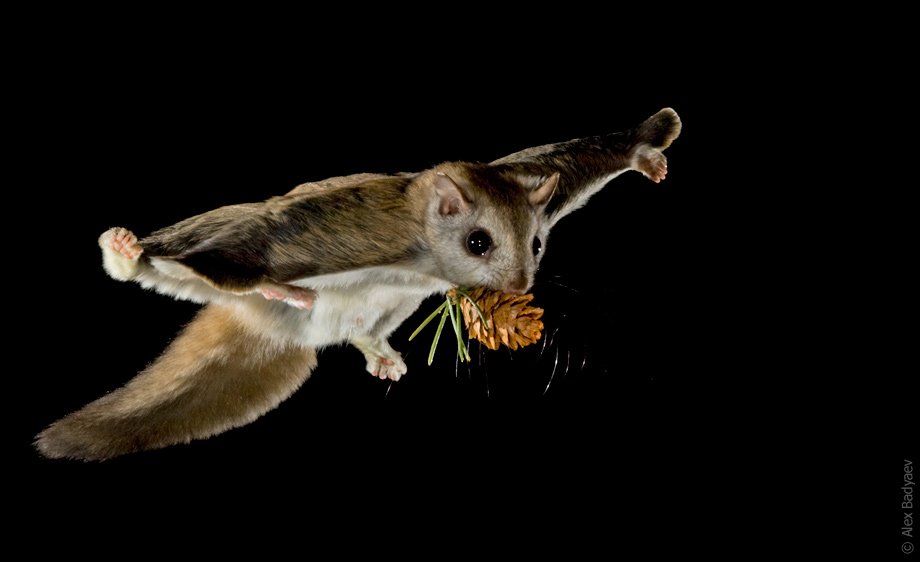
Flying squirrels are very elusive and seldom seen. Photo; Alex badyaev/www.tenbestphotos.com
Learn More
- Profile of the Carolina Northern Flying Squirrel by the North Carolina Wildlife Resources Commission
- Meet This Newly Discovered Flying Squirrel, an article by National Geographic about the Humboldt’s flying squirrel
- Women lead the effort on Appalachian mountain-top forests the story of 4 women making a difference for the Carolina northern flying squirrel
- Nest Box Plans for Flying Squirrels
